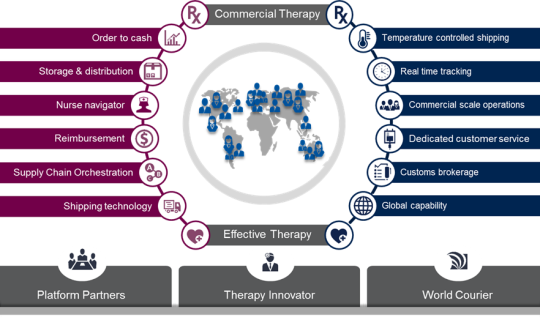Article: Cell and Gene Therapy: the Teenage Years
By Miguel Forte, MD, PhD
2017
could be considered the time when the cell and gene therapy field reached its teenage
years! The field is starting to deliver strong benefit to patients previously
without hope, as confirmed by the regulatory nod to the impressive clinical
data achieved with the lymphocyte targeting technology with CAR-T cells in
hematological malignancies.
These
successes have made the clinicians, investors and the public in general,
believe in cell therapy. What was a dream a few years ago has become a reality.
Cell therapy is no longer an exception as multiple approaches start to compete.
Competition is a sign of maturity where the technological basis becomes
established and different targeting approaches will either survive or disappear.
As an example, the risk-benefit balance with CAR-T therapies is now well established on the benefit side as well as on the safety management side. Physicians know how to harness the benefit and how to manage the side effects. Now it needs to evolve into addressing the solid tumor needs and face the competition of other cell lines and targeting approaches like the TCR and its expanded antigen targeting opportunity.
Success: from clinical to commercial
Nevertheless, this promising value is only a reality when it reaches the industrial stage and becomes available to a larger number of patients in the market. In line, manufacturing ability is becoming established with growing solutions from source material to automation. The supply chain management, with tracking and increasingly friendly solutions, is also being recognized as a key element in the success of delivering these therapies to patients wherever they may be.
Finally, more and more selected
clinical sites, through the post-approval activities, are ready to deliver the
cell therapy benefit through their training, expertise and well defined
administration contexts.
Sadly,
and despite all this enthusiasm and real clinical benefit, one of the last
links of this value chain, the payment and reimbursement of these products, is
failing to acknowledge this value and keep pace with innovation. To date only a
handful of patients have been treated and the waiting lists appear significant.
What seems to be needed is an adaptation and evolution of the payment and
reimbursement systems to a new entity and coding reality and, above all, integrating
the long term benefit with limited number of treatments, resulting with high
upfront cost with long term results.
Looking forward
In 2018, we will see new successes emerging, for patient benefit, and an increasing maturity of the advanced therapy medicinal products. The clinical trial numbers are exploding, regulators are becoming more competitive and the investment community is increasingly supporting innovation. We need to close all the gaps and consistently deliver patient benefit.
Like raising children, we, leaders in this field, have now the responsibility to make cell and gene therapy grow from an innovative adolescent to a mature, responsible and contributing adult, delivering value to a growing number of patients in need. We are faced with a huge opportunity and responsibility that comes with enormous potential.
Let us continue to seize it.




